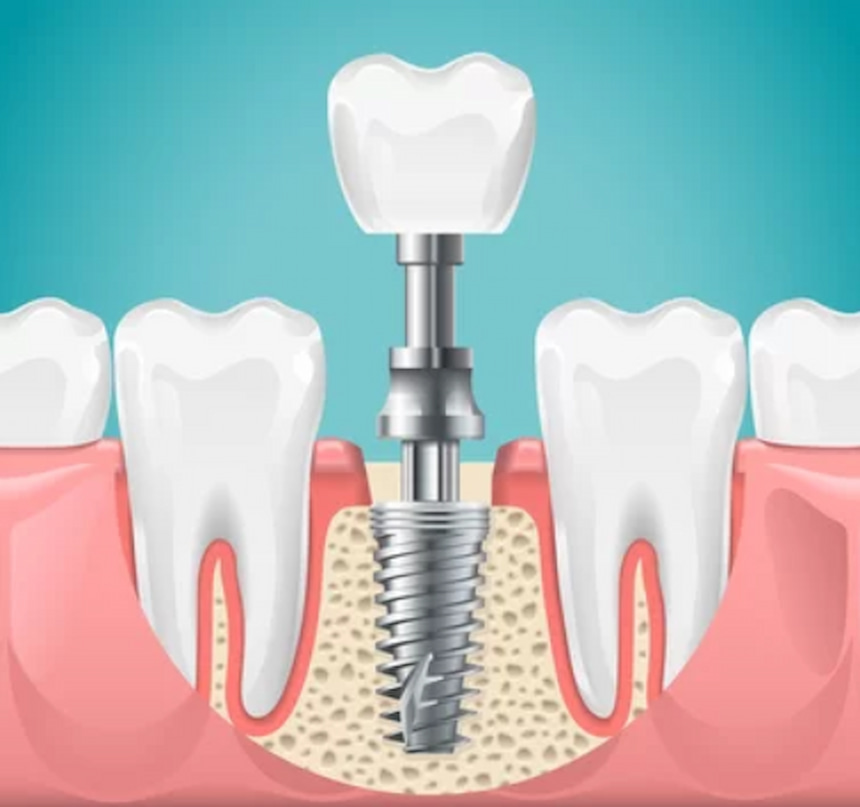
Dental implants are becoming easier and easier and can be done quicker and with only minimal recovery time needed. More and more dental patients are choosing to investigate dental implants, but many are hesitant because they aren’t sure if they can get dental implants if they have bone loss.
This question is far more common than you might think, and while the answer is simple, it can be complicated as well. Even though you can still technically get dental implants if you have bone loss, there are conditions and prerequisites procedures that have to be performed, to reverse the bone loss.
We’re going to cover everything you need to know about dental implants. Not only what they are and why your bones are so important to them, but what you can do to minimize bone loss, and what types of dental treatments are generally available to help get your bones in shape for your new implants.
What Are Dental Implants?
Dental implants are a surgically implanted post that acts as an anchor or artificial tooth “root”, for the new tooth that is installed on it. Dental implants are available in several different types and can replace either single teeth or entire rows or full sets of teeth. Single tooth implants can be used for single or multiple teeth, and a full dental bridge or denture can be installed using as few as four anchors per bridge.
The benefit of dental implants is that they allow the patient to retain their ability to bite and chew foods like normal. Dental implants can be seamlessly integrated with the existing teeth, and offer a permanent way to replace damaged, problematic, or missing teeth. Once the implants have osseointegrated the only maintenance that will be needed is similar to caring for natural teeth.

Why Bone Volume & Density Are Important
Dental implants are designed to fully replace a natural tooth, replicating all of the natural functions easily, and this includes the section of the tooth that keeps it in place naturally, the root. In your dental implant, this root is going to be the implanted post that is screwed into your jaw bone. The titanium stimulates bone growth, which helps the post and the bone to fuse.
This is the osseointegration process that is so crucial for the success of the operations. Jaws that have seen bone loss beyond a particular threshold set by the surgical team may not have enough bone to facilitate osseointegration. Cases like these may be eligible for adding volume and density to their jaw with bone grafts. Several types of bone grafts could be helpful, including new methods that don’t even need donor tissue.
What Causes Bone Loss In The Jaw?
There are several reasons that someone may experience bone loss in the jaw. The jaw begins to lose bone first, once teeth begin to be extracted or lost to decay or age.
Once all of the teeth are gone, the jaw begins to lose bone at an accelerated rate. This means that while not having teeth won’t necessarily preclude you from having dental implants, those that have used full dentures for many years may face additional challenges in building up their jaw bone.
Bone loss can also be seen as the result of degenerative conditions like osteoporosis. Your teeth do more than chew your food, they also help keep a lot of your face where it needs to be.
Those who lose teeth rapidly can begin to see a significant facial distortion that happens. Periodontitis, damage to the gum tissue, and more can cause your bone loss to advance to a stage too advanced for dental implants.

Signs That May Indicate You Have Some Bone Loss
The biggest changes when you are losing bone in your jaw, are changes to your facial structure. These will be the easiest to notice if you lose your natural adult teeth. Signs that your bone density may be decreasing include:
- Problems or discomfort when chewing or biting
- Having visible wrinkles around your mouth
- Headaches
- Pain in the jaw or face
- Lips that sink or drape inward toward the mouth

Reversing Bone Loss
If you have suffered from significant bone loss and are looking for bone implants for a potentially easy way to fix it, be aware that you can’t fix it all the time, in all cases. The science of bone grafts will help patients to increase their bone volume and density, as well as prevent additional bone loss.
You may have heard of dental implant bone grafts before, but if not, you may want to see if they are available in your area if you feel like you have seen some signs of bone loss. You may only need mild grafting, to reach a threshold your dentist is comfortable with, where you can start additional implant work.
Types Of Bone Grafts For Dental Implants
There will be a lot of factors that determine if your dental implants need bone grafts, and if they do, there will be even more deliberation on what types of grafts will be best suited to the operation. The three primary types are sinus lift, socket preservation, and ridge augmentation.
Sinus Lift
Sinus lifts are also known as sinus augmentations, and the purpose of this graft is to grow the upper jaw bone and treat bone loss in the part of the jaw that is adjacent to your sinus cavity. The sinus lift physically lifts the sinus cavity and puts the bone structure in a state of uncertainty.
Socket Preservation
In many cases, you’ll have a socket preservation bone graft following a tooth extraction at your local dentist. This means they are preserving the socket with a small bone graft that will cause the bone to grow faster. After getting a tooth pulled, your graft material will be packed into the cavity and will help the wound heal with a higher density than if no graft were placed.
Ridge Augmentation
If you are on the more severe side of the bone loss spectrum, there may be the need to build up the entire ridge of the jaw. A ridge augmentation will help restore the natural geometry of your face while adding enough support to provide an effective anchor for your dental implants.
There Are Thresholds For Bone Loss
If you are concerned that your dental processes aren’t going to be able to preserve your smile for much longer, it may be time to talk to your dentist. This includes anyone with dentures, who’s had them for more than a year. Contact your dentist and discuss your bone loss, and whether bone grafts are a possibility for you.

